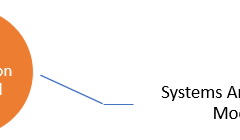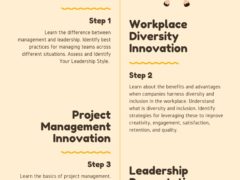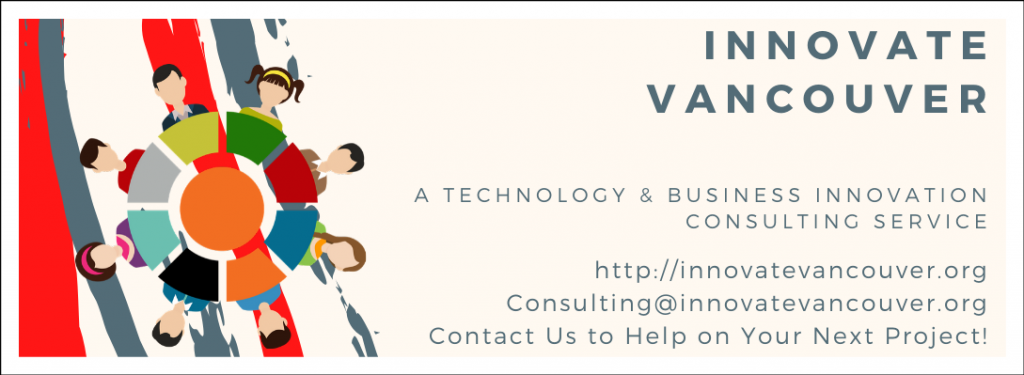The effective & lean learning organization is not a myth, but remains elusive and difficult to achieve. Opportunities for strengthening the modern learning organization exist throughout a company’s Systems Architecture Framework. Whether these opportunities are leveraged often depends on the company culture, business model, value chain, and ability to support learning and continuous improvement. ARCHITECTURE MODEL PRIORITIES Continuous improvement without benchmarks will more than likely support learning that creates no competitive advantages or value. When reviewing many of the Systems Architecture models available for planning, development, and the execution of shared ideas there are common components that can be used to build a framework for leveraging business innovation:  All of these are in competition with existing homeostatic mechanisms that are in conflict with the customer’s best interest. Each stage in the business model represents an opportunity to innovate. These stages can also be used to distinguish innovative companies from their competitors and thus help to establish best practices for leveraging innovation. What often distinguishes organizational cultures that break through legacy homeostatic mechanisms is their –
All of these are in competition with existing homeostatic mechanisms that are in conflict with the customer’s best interest. Each stage in the business model represents an opportunity to innovate. These stages can also be used to distinguish innovative companies from their competitors and thus help to establish best practices for leveraging innovation. What often distinguishes organizational cultures that break through legacy homeostatic mechanisms is their –
 All of these are in competition with existing homeostatic mechanisms that are in conflict with the customer’s best interest. Each stage in the business model represents an opportunity to innovate. These stages can also be used to distinguish innovative companies from their competitors and thus help to establish best practices for leveraging innovation. What often distinguishes organizational cultures that break through legacy homeostatic mechanisms is their –
All of these are in competition with existing homeostatic mechanisms that are in conflict with the customer’s best interest. Each stage in the business model represents an opportunity to innovate. These stages can also be used to distinguish innovative companies from their competitors and thus help to establish best practices for leveraging innovation. What often distinguishes organizational cultures that break through legacy homeostatic mechanisms is their –- Vision,
- Goals, and
- Timeline
CROSSING THE CHASM
In between these the present state and future vision state exists an opportunity to engage your stakeholders in the pursuit of a shared vision to both better serve existing customers as well as acquire a larger market share. If market share is not a primary metric for your company (as happens for many nonprofits) these patterns also illuminate an opportunity to continue serving your existing customers after the existing products/services are no longer needed. The standard planning models (typically 2, 3, and 5 year plans) are potentially outdated for environments that either lack the resources to change or the knowledge that change is urgently needed. The planning & development structure provided by Lean, Startup, and Agile methodologies offer examples of tools that are well suited for quick discovery, design, and prototyping of products. These also have shared elements that can be used to iterate (or pivot) quickly in a complex service environment.
The standard planning models (typically 2, 3, and 5 year plans) are potentially outdated for environments that either lack the resources to change or the knowledge that change is urgently needed. The planning & development structure provided by Lean, Startup, and Agile methodologies offer examples of tools that are well suited for quick discovery, design, and prototyping of products. These also have shared elements that can be used to iterate (or pivot) quickly in a complex service environment.STRATEGIC MODELS IN INNOVATION STRATEGY
These models include particularly useful strategies for rapidly engaging customers and share a common emphasis on product/service design iteration, continual customer engagement, rapid change processes, and continuous validation mechanisms to insure steps taken are always justified. Continuous learning ensures that the teams have the information they need and failure is embraced when leveraged as an opportunity to improve products and services. If interested many resources are available to further discover these models. The following keyword searches may be helpful and so are included below:- Startup principles
- Customer development model
- Lean principles
- Agile methodology
 Some of the best company cultures are both outward and inward facing, with an emphasis on the former. Alignment is never easy but worth the effort if the company’s mission is to stay effective, efficient, sustainable, and competitive. The criterion for evaluating what approach, strategies, tools, and metrics to prioritize is greatly influenced by organizational culture and systems architecture framework.
Some of the best company cultures are both outward and inward facing, with an emphasis on the former. Alignment is never easy but worth the effort if the company’s mission is to stay effective, efficient, sustainable, and competitive. The criterion for evaluating what approach, strategies, tools, and metrics to prioritize is greatly influenced by organizational culture and systems architecture framework. Homeostatic Mechanisms in Innovation Input Management
PORTFOLIO & ASSET MANAGEMENT Projects prioritized by a company naturally exclude others. This focuses the business model but can also limit adaptation to changing customer requirements, the regulatory and business environment, and decrease a company’s competitive advantage as other companies diversify their product and service offerings. SOFTWARE TOOLS & SYSTEMS Corporate technical debt and legacy systems similarly lock a company’s business model in a non-competitive and outdated posture. Simply onboarding new technology is not enough. These have to be used if their value is to be realized. This can often impact business processes and systems. RECRUITMENT & SELECTION Diversity in recruitment is about more than just representing the communities the company services. It is also about recruiting and incorporating knowledge, skills, and abilities that can expand upon existing corporate competencies. The homeostatic mechanisms of corporate culture is significantly influenced people. The mechanisms of recruitment and selection have a direct impact on portfolio & asset management as well as software tools & systems leveraged/ available to the company.
Projects prioritized by a company naturally exclude others. This focuses the business model but can also limit adaptation to changing customer requirements, the regulatory and business environment, and decrease a company’s competitive advantage as other companies diversify their product and service offerings. SOFTWARE TOOLS & SYSTEMS Corporate technical debt and legacy systems similarly lock a company’s business model in a non-competitive and outdated posture. Simply onboarding new technology is not enough. These have to be used if their value is to be realized. This can often impact business processes and systems. RECRUITMENT & SELECTION Diversity in recruitment is about more than just representing the communities the company services. It is also about recruiting and incorporating knowledge, skills, and abilities that can expand upon existing corporate competencies. The homeostatic mechanisms of corporate culture is significantly influenced people. The mechanisms of recruitment and selection have a direct impact on portfolio & asset management as well as software tools & systems leveraged/ available to the company.Conflicts of Interest Encounter Homeostatic Mechanisms
Corporate strategy often represent an organization’s, team’s, or executive’s interest in maintaining a power balance that is aligned with what they are capable, and possibly competent, to continue to control and/or deliver.Reason and Resistance in Innovation Architecture Design Inputs
Others are held accountable for measurable performance, best practices, and rigor whereas internal assets are permitted to use legacy tools, processes, models, and policies. Effectiveness and sustainability are pivot away from the pursuit of accountability, transparency, rigor, and best practices and towards anything that will keep the empire from collapsing. Best practices and rigor thus become defined by some of the following considerations:- What tools are available?
- What processes will be reinforced?
- What models will be adequately understood?
- What information will be acted on?
- What best practices will be supported?
Architectures in the Modern Learning Organization (MLO)
An effective, ethical, and competitive organizational culture needs to emphasize the needs of the customer and not the homeostatic mechanisms that prop-up ineffective and outdated legacy & leadership models of the past. SYSTEMS ARCHITECTURE SCORECARD A Modern Learning Organization — Innovation Scorecard that emphasizes the following Systems Architecture domains:
SYSTEMS ARCHITECTURE SCORECARD A Modern Learning Organization — Innovation Scorecard that emphasizes the following Systems Architecture domains:- Integration Management Architecture
- Performance Management Architecture
- Impact Management Architecture
- Information Management Architecture
- Continuous Improvement Architecture
The MLO Maturity Model
The Modern Learning Organization can borrow from other maturity assessment models to evaluate the current state, future vision/state, and gap between the two. S.M.A.R.T. strategies are then identified, mapped against an achievable timeline, to outline and shared vision roadmap for the organization.- Present State: Describe the current environment
- Future State: Describe the organization’s vision for the future
- Gap Analysis: Describe the gap between the present and future state
- Bridging the Gap: Identify the strategies, tools, and resources needed to reach the future
Evaluating Causal Mechanisms in Homeostatic Reinforcement
This is where we return to the beginning to evaluate the following:
- What assets are rejected and why?
- What models are rejected and why?
- What questions are rejected and why?
- What best practices are rejected and why?
- What is the impact of all the above?
- Who is making these decisions?
- How is the customer served/not? How is existing organizational assets served/not?
- What information is needed to avoid these homeostatic pitfalls?
Information as Strategy in the Modern Learning Organization
The question of who makes the decisions influences who owns the information. What information is prioritized is similarly influenced by existing homeostatic mechanisms. Altering these legacy models involves courageous change that understands the value of the following:- Knowledge Management
- Product Management
- Relationship Management
- Innovation Management
- Continuous Learning
- Technology Management
The Modern Learning Organization (MLO) Scorecard
An MLO Scorecard can be used to strengthen the company’s competitive advantage. Primary drivers of the scorecard are listed below, with an emphasis on innovation management, continuous learning, and technology management. Key Performance Indicators (metrics) are unique to the company, it’s business model, future state vision, product & service offerings, and maturity. A maturity model can be used to define the company’s present state, identify a desired future state, and evaluate-identify what strategies are needed to cross the chasm. Courage and a culture of agility & continuous improvement is essential if the efforts to reach the future are to be effective, efficient, and sustainable. Business and process engineering, restructuring, and revisioning may be suggested for gaps of larger magnitude.
A maturity model can be used to define the company’s present state, identify a desired future state, and evaluate-identify what strategies are needed to cross the chasm. Courage and a culture of agility & continuous improvement is essential if the efforts to reach the future are to be effective, efficient, and sustainable. Business and process engineering, restructuring, and revisioning may be suggested for gaps of larger magnitude.| Systems Architecture Models | Inputs | KPI’s |
|---|---|---|
| Knowledge Management | Data Models Competency Models Business Models Value Chain Competitive Analysis Strategic Roadmap | |
| Product Management | Product Models Service Models | |
| Relationship Management | Communications Management | |
| Innovation Management | Knowledge Management Relationship Roadmap Product Roadmap Service Roadmap Continuous Learning Roadmap Technology Roadmap | |
| Continuous Learning | GAP Analysis Future State Mapping & Roadmap Knowledge Management Product Management Relationship ManagementLean Management Technology Management | |
| Technology Management | Data Management Records Management Quality Management Incident & Risk Management Compliance Management Analytics & Reporting Collaboration & Planning Financial, Resource, & Assest Management Invoices & Purchase Management Learning Management |
The Future State Roadmap
Choose your future state wisely to take into consideration anticipated future customer product and service needs. Identify the tools, resources, and models that are needed to learn continuously, adapt to changing requirements, inform insights, as well as anticipate and respond to both risks and constraints. Strengthen, reinforce, and adapt the company’s business model in order to remain agile and sustain a competitive advantage. Leverage industry best practices (models, standards, processes, and tools) to strengthen delivery. Strengthen, reinforce, and build corporate leadership in order to help drive the conversation. Formalize the vision to help communicate the vision, align strategies, and manage the allocation of resources and responsibilities. Travis Barker, MPA GCPM Innovate Vancouver [email protected] Innovate Vancouver is a Technology and Business Innovation Consulting Service located in Vancouver, BC. Contact us to help with your next project!




